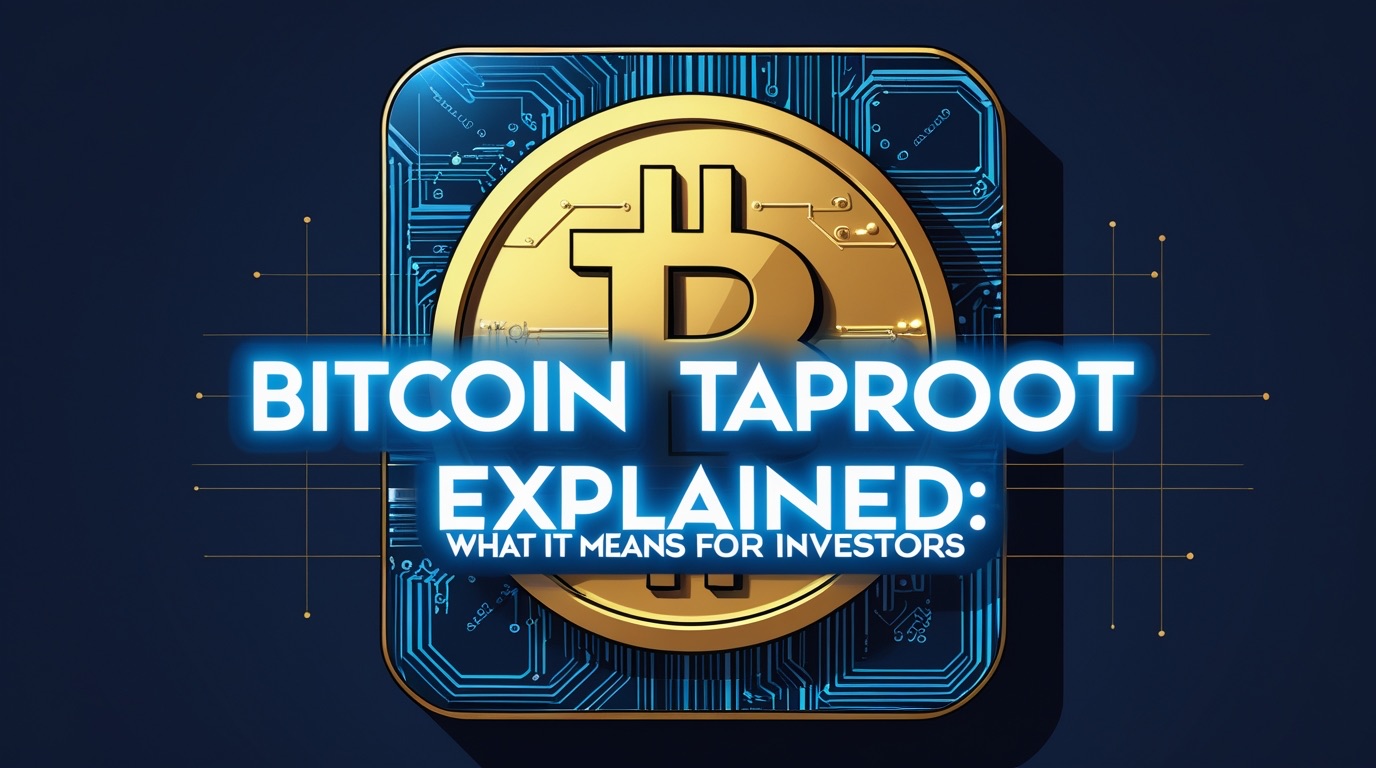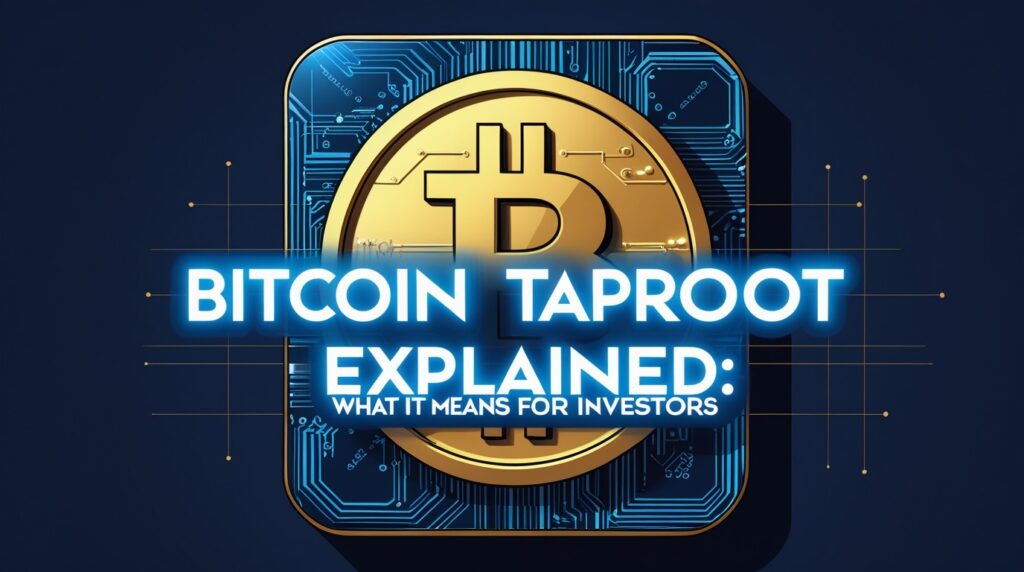Bitcoin Taproot represents one of the most significant upgrades to the Bitcoin network since its inception. Introduced in November 2021, Taproot aims to enhance Bitcoin’s functionality, scalability, and privacy. The upgrade is a soft fork of the Bitcoin blockchain, bringing key improvements that have sparked interest among developers, miners, and investors alike.
What Is Bitcoin Taproot?
Bitcoin Taproot combines multiple technological advancements into a single update. Its core features include the implementation of Schnorr signatures and Merkleized Abstract Syntax Trees (MAST). These features streamline transaction processes, improve network efficiency, and boost privacy. Taproot enables Bitcoin to handle complex transactions more efficiently while reducing the amount of data shared publicly on the blockchain.
Why Was Taproot Needed?
Before Taproot, Bitcoin faced challenges with scalability and transaction flexibility. Advanced transaction types, such as those involving multi-signature wallets or smart contracts, required significant computational power and were often costly. Taproot addresses these limitations by optimizing transaction storage and reducing data usage.
Key Features of Bitcoin Taproot
Bitcoin Taproot introduces several technical enhancements that improve the blockchain’s usability. These features are integral to understanding how the upgrade benefits investors and the broader cryptocurrency ecosystem.
Schnorr Signatures
One of Taproot’s most groundbreaking additions is Schnorr signatures. This cryptographic method replaces the previously used Elliptic Curve Digital Signature Algorithm (ECDSA). Schnorr signatures allow multiple signatures to be aggregated into a single one, enhancing transaction efficiency and reducing data size.
Merkleized Abstract Syntax Trees (MAST)
MAST is another key component of Bitcoin Taproot. It enables the selective revelation of transaction data, which enhances privacy and reduces blockchain bloat. By revealing only the necessary parts of a smart contract, MAST ensures that sensitive information remains hidden while maintaining transparency where needed.
Improved Privacy
Privacy is a cornerstone of Bitcoin Taproot. By consolidating multiple transaction types into a single format, Taproot makes it nearly impossible to differentiate between regular and complex transactions. This uniformity bolsters user anonymity and enhances the overall security of the network.
How Bitcoin Taproot Impacts Investors
Bitcoin Taproot’s implementation has several implications for investors. Its improvements in scalability, privacy, and efficiency open new opportunities and reduce risks associated with the cryptocurrency market.
Enhanced Scalability
The ability to aggregate signatures and optimize transaction data means lower fees and faster transaction times. For investors, this translates to reduced costs when transferring funds or interacting with the Bitcoin network. The scalability improvements also make Bitcoin a more viable option for larger-scale financial applications.
Increased Privacy
Taproot’s privacy enhancements protect investors from potential scrutiny by masking the complexity of their transactions. This feature is particularly beneficial for institutional investors who require discretion when moving large sums of money.
Broader Use Cases
With Taproot, Bitcoin can now support more advanced applications, such as decentralized finance (DeFi) and smart contracts. These new use cases increase Bitcoin’s utility and attractiveness as an investment, potentially driving up demand and value.
Comparing Taproot to Previous Bitcoin Upgrades
Taproot builds on earlier upgrades, such as SegWit (Segregated Witness), which improved transaction malleability and block size. While SegWit addressed foundational issues, Taproot takes Bitcoin’s capabilities to the next level by introducing features that enable more complex and secure functionalities.
Differences from SegWit
While SegWit primarily focused on increasing block capacity, Taproot emphasizes transaction flexibility and privacy. Together, these upgrades create a more robust and scalable Bitcoin network.
The Role of Soft Forks
Taproot is implemented as a soft fork, meaning it is backward-compatible. This ensures that nodes that haven’t upgraded to Taproot can still interact with the network, fostering a seamless transition and broad adoption.
Challenges and Risks of Bitcoin Taproot
Despite its benefits, Bitcoin Taproot is not without challenges. Understanding these potential risks is crucial for investors.
Adoption Rates
For Taproot to realize its full potential, widespread adoption is necessary. Miners, developers, and wallet providers need to update their systems to support the upgrade. Slow adoption rates could delay its benefits.
Complexity for Developers
While Taproot simplifies user-facing transactions, it introduces complexity for developers. Crafting Taproot-compatible applications requires advanced technical knowledge, which could limit its initial uptake.
Market Volatility
As with any major upgrade, market volatility is a possibility. Investors may experience price fluctuations as the market adjusts to Taproot’s implications and adoption.
Long-Term Benefits of Bitcoin Taproot
Despite its challenges, Bitcoin Taproot’s long-term benefits outweigh its short-term risks. The upgrade positions Bitcoin to remain competitive in an evolving cryptocurrency landscape.
Strengthened Network Security
The enhanced privacy and reduced data exposure from Schnorr signatures and MAST make the Bitcoin network more secure. This increased security benefits all stakeholders, including investors.
Greater Institutional Adoption
With Taproot’s privacy and scalability improvements, Bitcoin has become a more attractive option for institutional investors. Large-scale adoption by financial institutions could significantly boost Bitcoin’s value.
Expanded Ecosystem
The introduction of Taproot paves the way for Bitcoin to support DeFi, smart contracts, and other advanced functionalities. These additions could attract new users and developers, driving further innovation and adoption.
How to Invest in Bitcoin Post-Taproot
Investors looking to capitalize on Bitcoin Taproot’s upgrades should consider the following strategies:
Monitor Adoption Trends
Stay informed about Taproot’s adoption across the Bitcoin network. Higher adoption rates typically correlate with increased functionality and value.
Focus on Long-Term Potential
Taproot’s benefits are most impactful in the long term. Investors should focus on Bitcoin’s broader use cases and scalability rather than short-term price fluctuations.
Leverage Advanced Wallets
Use wallets that support Taproot transactions to take full advantage of its features. These wallets enable users to benefit from lower fees and enhanced privacy.
Conclusion
Bitcoin Taproot marks a pivotal moment in the cryptocurrency’s evolution, bringing significant improvements to scalability, privacy, and functionality. For investors, Taproot opens new opportunities and enhances the overall appeal of Bitcoin as an asset. While challenges remain, the long-term benefits of Taproot make it a transformative upgrade with far-reaching implications for the Bitcoin ecosystem and its investors.
By understanding and leveraging the advantages of Bitcoin Taproot, investors can position themselves to benefit from Bitcoin’s continued growth and innovation.
FAQS
What is Bitcoin Taproot?
Bitcoin Taproot is a significant upgrade to the Bitcoin network, enhancing scalability, privacy, and transaction efficiency through the implementation of Schnorr signatures and Merkleized Abstract Syntax Trees (MAST). These improvements make Bitcoin more adaptable to advanced use cases like DeFi and smart contracts.
How does Bitcoin Taproot improve privacy?
Taproot consolidates complex transactions into a single format, making it harder to distinguish between simple and advanced transactions. This enhances user anonymity and secures sensitive information by revealing only necessary parts of the transaction.
What are the benefits of Bitcoin Taproot for investors?
For investors, Taproot improves scalability by reducing transaction fees and times while enhancing privacy for large transactions. It also opens the door for broader use cases, potentially increasing Bitcoin’s value and utility in the long term.
What risks does Bitcoin Taproot pose to the market?
Taproot’s adoption rate is critical for its success; slow adoption could delay its benefits. Additionally, the complexity for developers and potential market volatility may introduce short-term risks as the network adapts to the upgrade.
How can I invest in Bitcoin after the Taproot upgrade?
Investors should monitor Taproot adoption trends and focus on the long-term potential of Bitcoin’s scalability and use cases. Utilizing wallets that support Taproot transactions will allow users to take full advantage of the upgrade’s benefits










